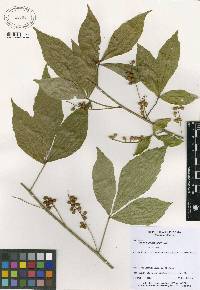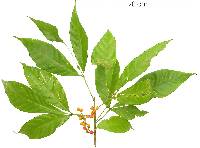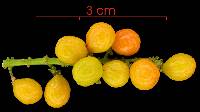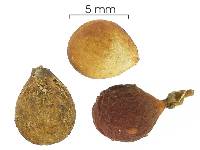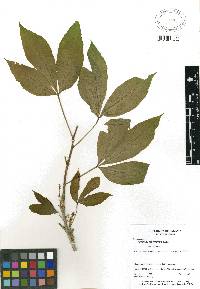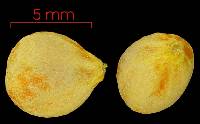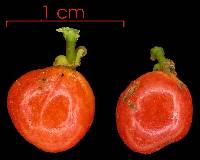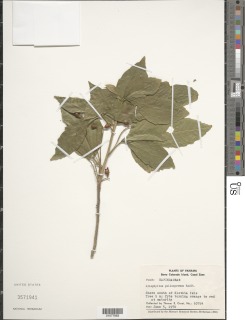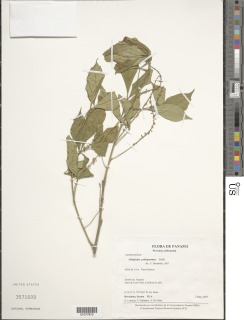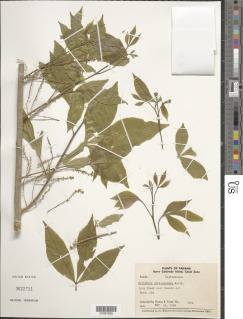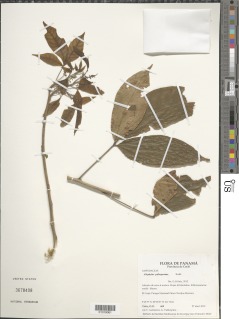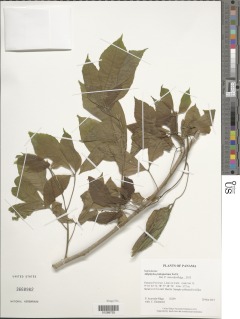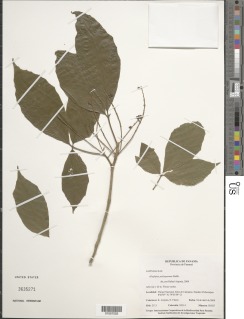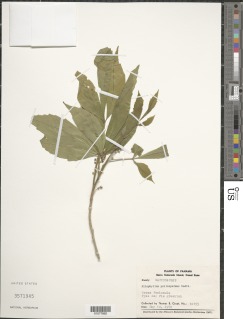

|
|
|
|
Family: Sapindaceae
esquitilla, more...esquitillo
[Allophylus panamensis Radlk.] |
Description: A small tree not quite reaching the forest canopy, with a trunk often branched near the base. The bark is cream colored. Leaves are alternate, compound, always with three leaflets which are slightly toothed. The petiole is very long, weak, and slightly swollen where it leaves the branch. Reproduction: The white flowers are produced from February to May. Fruits are small berries, maturing yellow or reddish, from May to July, and are dispersed by animals. Distribution: Sporadic and not common from Gamboa north, in secondary forest or mature forest. Not in the dry Pacific coast forests and not on the wet Santa Rita ridge nor monrtane sites, and never seen along roads or in towns. Similar Species: Trifoliate compound leaves are rare, and the long petioles sets this species apart. Only the congener, LK allooc A. occidentalis, LK2 should ever be confused, and it is restricted to the drier Pacific slope. A. occidentalis has leaflets that are fuzzy to the touch, unlike the smooth and hairless leaflets of A. psilospermus. Note that the genus Allophylus is spelled a number of different ways in botanical floras (Allophyllus, Alophyllus). Descripción: Árbol de 5 a 10 m de alto. Tronco con la corteza exterior amarillenta o gris. Hojas trifolioladas y alternas. Folíolos de 3-15 x 2-6 cm, elípticos, con ápice acuminado, bordes dentados y base decurrente. Pecíolo de 2-5 cm de largo. La especie es polígama. Flores blancas. Frutos ovoides, de 0.5-0.9 cm de diámetro y con dos carpelos, pero usualmente uno es abortivo, verdes, tornándose amarillos o rojos al madurar. Datos Ecológicos: La especie crece a bajas y medianas elevaciones, en bosques húmedos o muy húmedos. En Panamá se encuentra en las provincias de Chiriquí, Coclé, Darién, Los Santos, Panamá y Veraguas. Deja caer parcialmente sus hojas durante la estación seca, pero las repone a inicios de la estación lluviosa. Florece y fructifica de febrero a julio. Especies Parecidas: A menudo se confunde con LK allooc Allophylus racemosus LK2 , pero en A. racemosus los folíolos tienen pelos amarillos y son de consistencia aterciopelada al tacto. Usos: La madera es empleada para leña, postes de cercas y en la fabricación de mangos de herramientas. The species is variable throughout Panama. BCI plants are generally glabrate on the surface of the leaves and sparsely pubescent on the veins, sometimes with axillary tufts of trichomes in the vein axils. The closely related A. occidentalis Sw. (not on BCI) is puberulent to villous over the entire leaf surface. |
|
|
|


